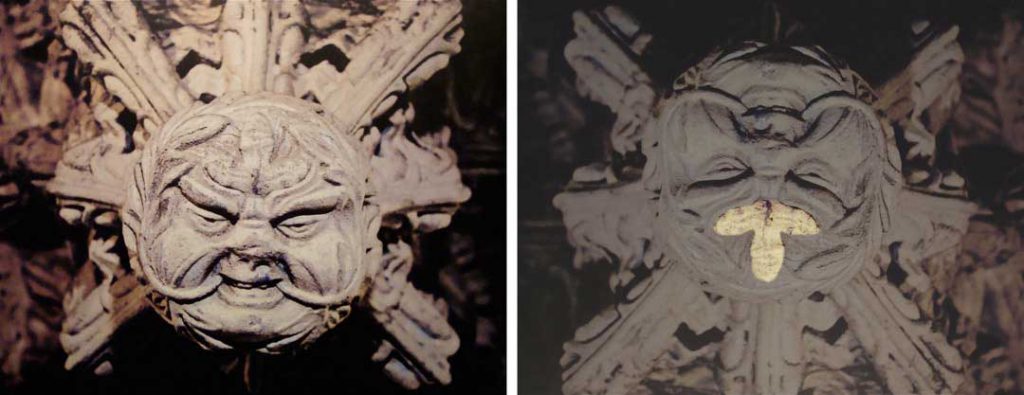Our book, The Psychedelic Gospels, was born and nurtured by synchronicity. For Stanislav Grof, the founder of LSD psychotherapy, synchronicities – the experience of highly implausible, meaningful coincidences – are “creations of cosmic intelligence.” (For a comprehensive discussion of “synchronicity,” see C.G. Jung’s “Foreword” to Richard Wilhelm’s translation of The I Ching, or Book of Changes, 1950).
Here’s one of the many synchronicities that occurred during our decade-long research journey. It took place on an anniversary trip to Scotland in 2006. Inspired by Dan Brown’s bestselling novel, The Da Vinci Code, we visited Rosslyn Chapel. There Jerry purchased a plaster replica of an impressive Green Man head as a memento. After Rosslyn we traveled to the Cairngorms, Scotland’s highest mountains. Soon after arriving, our innkeeper recommended that we visit the Reindeer Center, home of the only wild reindeer herd in Europe outside of Scandinavia.
The Timothy Leary of Reindeer
Standing on a windswept mountainside among these gentle caribou, our guide told us that all of the reindeer loved Amanita muscaria, the psychoactive mushroom praised as the Soma-god of the Hindu Rigveda. As an anthropologist who taught a course on “Hallucinogens and Culture,” Jerry found this fascinating, even more so when our guide pointed out Sircus. As the “Timothy Leary of the reindeer herd,” Sircus would gorge on Amanita muscaria during the mushroom season and stand staring stoned immaculate at the sun for hours.

Cairngorm Reindeer Herd, Aviemore, Scotland
A few days later in a restaurant in St. Andrews, Scotland, with the memory of mushroom munching reindeer still fresh in our minds, Jerry took the Green Man head out of his knapsack. He placed it on the table and turned it 180 degrees. Suddenly, he found himself staring at a taxonomically correct Amanita muscaria mushroom, cleverly sculpted upside down on the Green Man’s forehead.

Psychedelics in Christian Art
It was this improbable but highly meaningful coincidence — this concurrence of the reindeer herd, Green Man, and psychoactive mushrooms — that set our heads spinning. We began speculating on what the presence of a psychedelic mushroom in a 15th century Catholic church implied for the history of Christianity. Did Christianity have a psychedelic history – hidden in plain sight for centuries?
It was this chance discovery that eventually compelled us to undertake an anthropological research journey. We visited churches and cathedrals in Europe and the Middle-East in search of additional evidence of psychedelics in Christian art – in frescos, mosaics, stained-glass windows and illuminated bibles. The stunning color photographs of these psychedelic icons provide the extraordinary evidence for the extraordinary claims made in The Psychedelic Gospels.
The many synchronicities that occurred in researching and writing our book convinced us that we were on the right path, and, above all, that we were not mistaking auspicious fate for mere coincidence. Several of these synchronicities turned out to be “synchronipities,” a word Julie coined to describe a fortuitous fusion of synchronicity and serendipity (“a fortunate happenstance”). But that’s a topic for a future blog. In the meantime, happy synchronicity hunting!
To read more about our visit to the reindeer herd, please see Chapter 3, “Santa, the Reindeer Shaman,” in The Psychedelic Gospels (click here to purchase our book).
By Julie M. Brown and Jerry B. Brown, coauthors, The Psychedelic Gospels.






